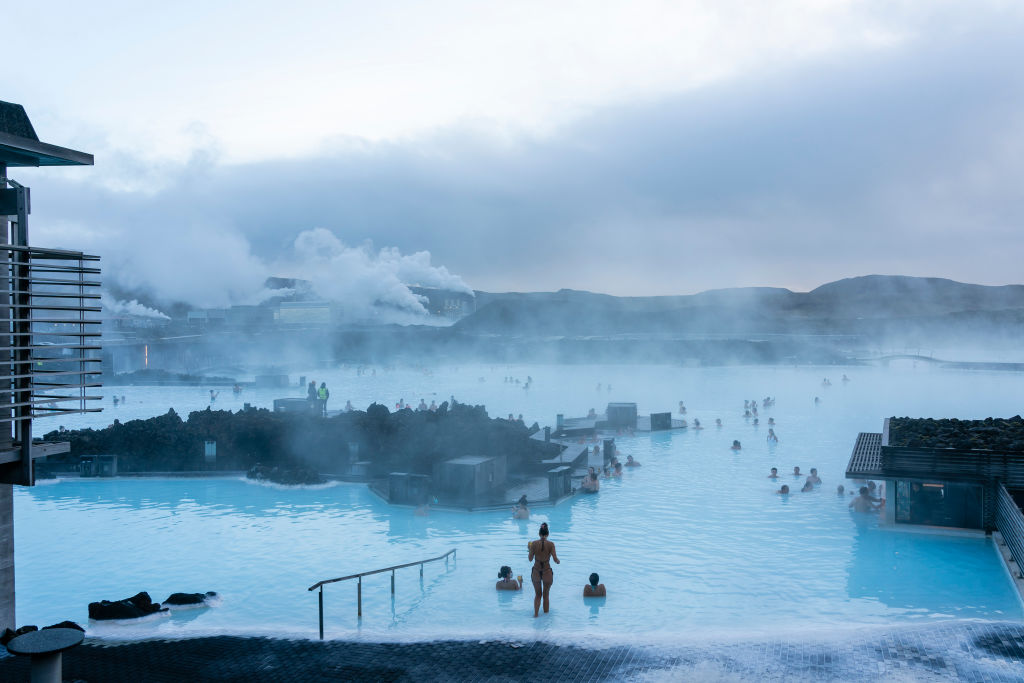A volcanic eruption has started again in Iceland close to an already severely damaged fishing town and the country’s top tourist attraction, the Blue Lagoon spa.
It’s the third time in recent months that lava is gushing out of cracks on the ground on the Reykjanes peninsula, about 40 kilometers (25 miles) from the country’s capital.
The eruption started at about 6 a.m. local time northeast of the Blue Lagoon, with lava bursting out from a 3-kilometer crack, according to Iceland’s Met Office. The flow of molten rock has cut off a road and severed a hot water pipe serving all the peninsula’s 30,000 inhabitants.
The flows are directed away from Grindavik, a town that’s had to be abandoned — potentially permanently — due to damage from the lava outbursts and seismic activity.
Read More: Why Iceland’s Volcano Eruption Was a ‘Black Day’ for the Country
“It is farther away from Grindavik than last time so it is better for the town,” Kristin Jonsdottir, a seismologist at the Met Office, said by phone. “What’s at stake now is rather the infrastructure further to the north, like Svartsengi, where the power plant and Blue Lagoon sit” and nearby roads.

Hotels at the Blue Lagoon spa site were evacuated overnight, according to newspaper Morgunbladid. Other infrastructure in the area include the power plant owned by HS Orka hf and a number of businesses centered around geothermal heat and power. Earth barriers have been built to protect the area from lava flows.
Utility HS Veitur hf is working on laying a replacement hot-water pipe to serve the area, but said it may take a few days to complete.
As in previous volcanic incidents recently, flights in and out of the country are operating as normal and they’re expected to continue without interruption.
Read More: A Volcano in Iceland Is Spewing Lava From a Miles-Long Crack. Here’s What to Know
The Reykjanes peninsula had lain dormant for about 800 years until seismic activity started in 2020. There have since been six eruptions, including the current one. The first three that occurred from 2021 were in uninhabited areas and posed little risk to people and infrastructure.
Iceland is one of the most geologically active places on earth due to its position between the North American and Eurasian tectonic plates on the mid-Atlantic ridge. It has about 30 volcanic systems and more than 600 hot springs.
In Grindavik, thousands of tremors, several earthquakes and two volcanic eruptions have ripped up roads, power lines and water pipes, and caused potentially deadly cracks and crevasses that put those treading on the ground above in jeopardy.
While authorities in Iceland had already built barriers that helped keep lava mostly out of town, the area has entered an era of volcanic activity that is hard to predict but expected to continue for years, scientists at the Met Office have warned.
Grindavik’s destruction represents the worst volcanic damage in 50 years in Iceland, given most eruptions happen in the wilderness. In 1973, part of a 5,000-person fishing town was buried under lava in the Westman Islands, off the country’s southeastern coast.
Fissure eruptions on land, such as the current one, produce little ash and usually wreak no havoc on air travel.
One of the most disruptive eruptions in Iceland’s recent history happened in 2010 when volcano Eyjafjallajokull in the southern part of the country released a plume of ash so vast that it grounded air traffic across Europe for weeks, resulting in the cancellation of 100,000 flights and affecting over 10 million people.
More Must-Reads from TIME
- Inside Elon Musk’s War on Washington
- Meet the 2025 Women of the Year
- The Harsh Truth About Disability Inclusion
- Why Do More Young Adults Have Cancer?
- Colman Domingo Leads With Radical Love
- How to Get Better at Doing Things Alone
- Cecily Strong on Goober the Clown
- Column: The Rise of America’s Broligarchy
Contact us at letters@time.com